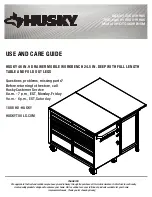
Troubleshooting failover operation
Cause
To find diagnostic information about the operation of basic and advanced path failover:
• Examine the library event log or RAS tickets. See
Additional tape drive sense codes
on page 77.
• Examine the Windows Device Manager view of tape drives and media changers. See
on page 66 .
• Tape drive support tickets contain more detailed information that may be required by
Hewlett Packard Enterprise support engineers.
To find additional diagnostic information for advanced path failover:
• Examine the host log files for entries from the advanced path failover drivers.
◦
◦ Linux or HP-UX
/var/adm/syslog/syslog.log
• Use host-specific utilities to view the status of the drivers.
◦
on page 67
◦
on page 54
◦
Commands for viewing tape and library devices connected to a system
• Optionally install Windows debug (checked build) drivers, which will save a crash dump in the event of
Preparing to generate Windows driver debug dump log files
on page 79 .
• Use the Windows Advanced Failover Diagnostic application to clear library reservations and prevent
media removal settings if "Reservation Conflict" or "Medium Removal Prevented" errors occur.
NOTE:
For known issues and workarounds, see
on page 84 .
Locating a failed path
The system administrator should have a map of the storage area network, which will indicate how ports
on the various devices (hosts, switches, and libraries) are connected to one another.
Common causes of failed paths are:
• Loose or unplugged cables
• Loose or unplugged Fibre Channel transceivers
• Failed switch ports
64
Troubleshooting failover operation
















































